Around one-fifth of the population is thought to suffer from the sun allergy known as Polymorphous Light Eruptions (PLE). Its symptoms can be both uncomfortable and distressing, since they tend to appear on highly visible areas of the body, including the arms and chest. However, an increased understanding of the causes of the condition is now leading to more effective ways to treat it.
What are Polymorphous Light Eruptions (PLE)?
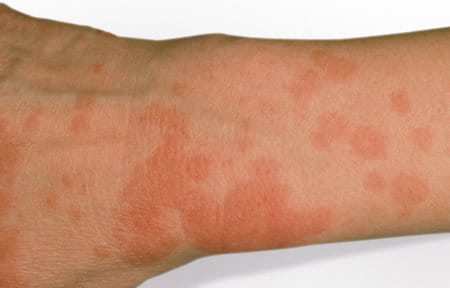
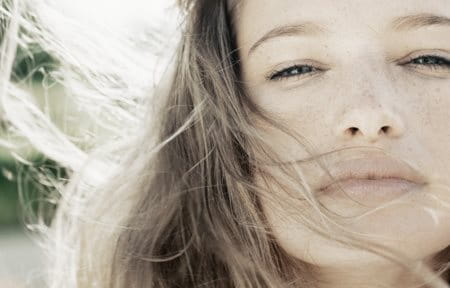
PLE is the most common photodermatosis, a skin disorder precipitated by exposure to UV radiation. It is characterised by recurrent, delayed symptoms, which appear one or two days after being out in the sun and can range from a mild rash to an outbreak of pustules.
Read more about the effect of the sun on the body.
It is more likely to affect young women, and people with fair skin.
It commonly occurs in the spring, when skin that has been covered in the winter is exposed to sunlight. It can even be triggered by sun through glass. If exposure continues, symptoms may worsen, and outbreaks are likely to recur every year. However, PLE is not infectious, and has no proven connection with skin cancer.
What are the symptoms of PLE?
There are several morphological variants of PLE, and symptoms vary. They may include a bumpy rash, skin redness, blisters or pustules, and are nearly always accompanied by intense irritation. In more severe cases larger, hemorrhagic lesions can occur. The most frequently affected areas include the underside of the arms, the chest and, less often, the face.
What causes PLE?
The causes of PLE are not fully known. However, recent studies suggest that functional processes are altered in the skin of people with PLE.

- UV rays – especially long wavelength UVA rays (which trigger PLE in 80% of people affected) – penetrate deeply into the skin where they can damage cells.
- UV-induced free radicals form highly reactive chemical compounds which cause oxidative stress, resulting in cell damage.
- Recent findings indicate that people with PLE have an impaired cellular defence, which makes their skin incapable of handling these free radicals.
- On exposure to the sun their skin responds by overactivating its immune function, resulting in red and inflamed skin.
How can PLE be prevented?
The appearance of PLE can be prevented by using sunscreen (see below), limiting exposure to the sun, especially 11am-3pm, and wearing photoprotective clothing.
In cases of severe PLE, a course of prophylactic light therapy (also known as ‘photo hardening’ or desensitization) in early spring can help.
Here, the skin is gradually exposed to UV rays in order to build up a tolerance of sunlight. Some people with PLE find that the condition gradually improves over time, and can disappear completely.
How can PLE be treated?
Outbreaks of PLE can be extremely itchy. Soothing lotions can reduce the irritation, as can the topical application of steroid creams.
Specific sunscreens are a mainstay in both alleviating the condition’s symptoms and preventing their reoccurrence.
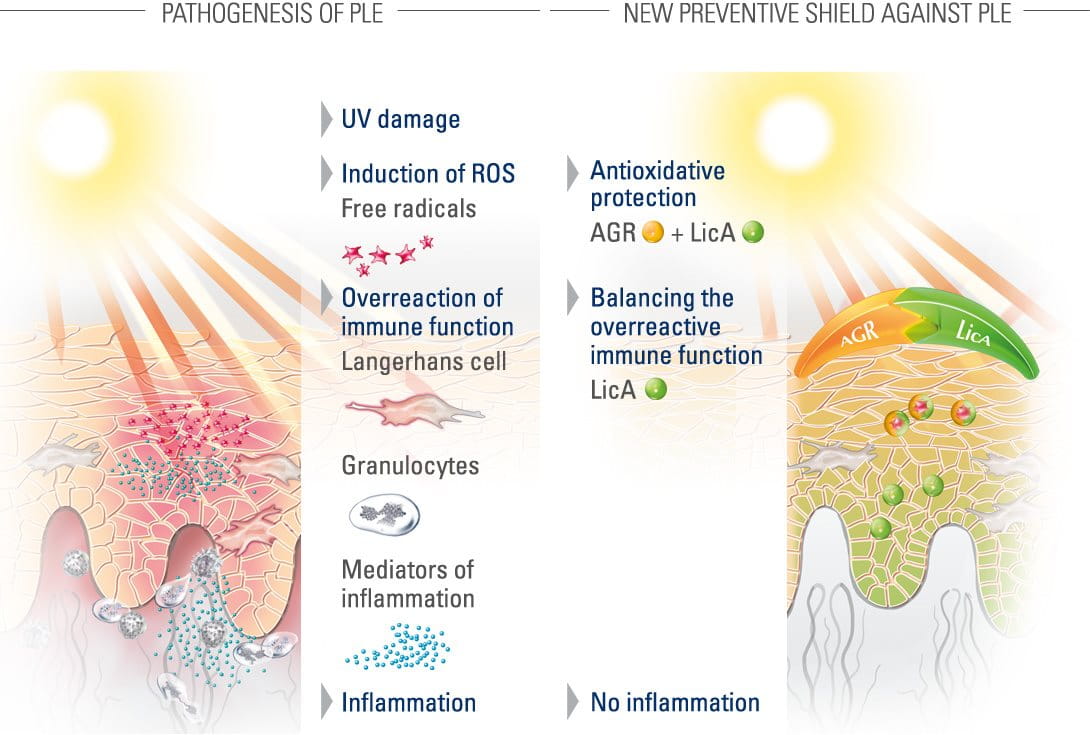
Eucerin has developed a sunscreen which combines powerful antioxidant alpha-Glucosylrutin (AGR) with the anti-oxidant & anti-inflammatory Licochalcone A. The natural ingredients in Eucerin Allergy Protection Sun Creme-Gel SPF50 penetrate the upper skin of the epidermis to increase cellular protective systems and block inflammatory responses of the skin cells. As a result, free radicals are neutralised, and the skins own cell protection is strengthened.
Other types of sun allergies
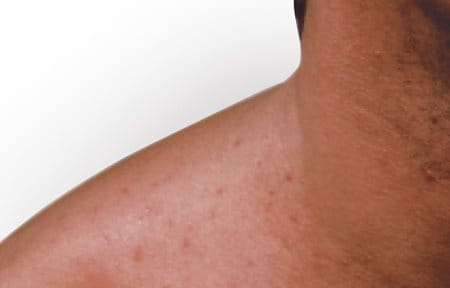
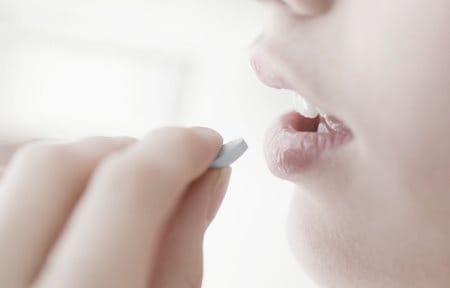
While PLE is thought to affect up to 90% of people with sun allergies, there are other conditions that have similar symptoms.
Acne aestivalis (Mallorca acne) is not caused by UV radiation alone, but appears only after interaction with certain ingredients found in cosmetics or sunscreen products such as certain emulsifiers. It mostly affects women aged 25-40, many of whom have had a history of acne in puberty. Its clinical symptoms closely resemble those of PLE.
Photoreactions are delayed inflammatory reactions induced by UV radiation after sensitization with certain substances. These can be phototoxic (the ingredients of plants) or photoallergic (medications, fragrances, colourants). These skin reactions manifest themselves as itchy nodules in places exposed to light.
Read more about factors that influence the skin.
When to seek professional advice
PLE can have similar symptoms to other skin allergies and conditions, so it is best to seek professional advice. The skin test can also be a helpful tool to learn more about your signs and symptoms and available care solutions.
Attention
Talk to your dermatologist or pharmacist if you’re worried about any of your symptoms.



